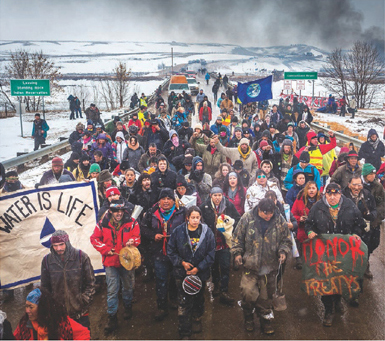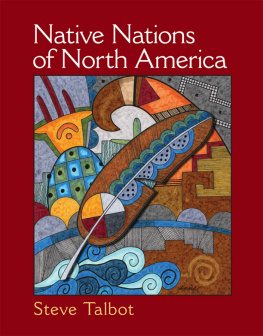
Published in 2018 by Britannica Educational Publishing (a trademark of Encyclopdia Britannica, Inc.) in association with The Rosen Publishing Group, Inc.
29 East 21st Street, New York, NY 10010
Copyright 2018 The Rosen Publishing Group, Inc. and Encyclopdia Britannica, Inc. Britannica, Encyclopdia Britannica, and the Thistle logo are registered trademarks of Encyclopdia Britannica, Inc. All rights reserved.
Distributed exclusively by Rosen Publishing.
To see additional Britannica Educational Publishing titles, go to rosenpublishing.com.
First Edition
Britannica Educational Publishing
J.E. Luebering: Executive Director, Core Editorial
Andrea R. Field: Managing Editor, Comptons by Britannica
Rosen Publishing
Heather Moore Niver: Editor
Nelson S: Art Director
Tahara Anderson: Series Designer
Cindy Reiman: Photography Manager
Heather Moore Niver: Photo Researcher
Library of Congress Cataloging-in-Publication Data
Names: Wolny, Philip, author.
Title: Native American treatment and resistance / Philip Wolny.
Description: New York : Britannica Educational Publishing, in Association with Rosen Educational Services, 2018 | Series: Westward expansion: Americas push to the Pacific | Includes bibliographical references and index. | Audience: Grades 58.
Identifiers: LCCN 2017018666| ISBN 9781680487701 (eBook)
Subjects: LCSH: Indians, Treatment ofNorth AmericaJuvenile literature. | Indians of North AmericaGovernment relationsJuvenile literature. | Indians of North AmericaWarsJuvenile literature. | United StatesTerritorial expansionJuvenile literature.
Classification: LCC E93 .W84 2018 | DDC 970.004/97dc23
LC record available at https://lccn.loc.gov/2017018666
Manufactured in the United States of America
Photo credits: Cover, cover and interior pages (banner) Library of Congress Prints and Photographs Division; p. 5 Pacific Press/LightRocket/Getty Images; p. 9 Fotosearch/Archive Photos/Getty Images; p. 10 Lives of Famous Indian Chiefs by Norman B. Wood., 1906; p. 12 Bettmann/Getty Images; p. 13 Emmet Collection, New York Public Library Digital Collection (420573); p. 15 Library of Congress, Washington, D.C.; p. 18 Library of Congress, Washington, D.C. (LC-USZ62-110274); p. 19 A Historical Narrative of the Civil and Military Services of Major-General William H. Harrison by Moses Dawson, 1824; pp. 22, 34 Encyclopdia Britannica, Inc.; p. 23 Al Moldvay/Denver Post/Getty Images; pp. 24, 35, 38 MPI/Archive Photos/Getty Images; p. 27 Library of Congress, Washington, D.C. (digital id: ppmsca 09855); p. 28 Historical/Corbis Historical/Getty Images; p. 29 Library of Congress, Washington, D.C. (neg. no. LC-USZ62-36613); p. 30 Universal Images Group/Getty Images; p. 32 Danita Delimont/Alamy Stock Photo; p. 36 Library of Congress, Washington, D.C. (neg. no. LC-USZ62-91032); p. 41 Ralph Crane/The LIFE Picture Collection/Getty Images.
CONTENTS
Chapter One
Whose Land?
Chapter Two
The Opening of the West
Chapter Three
From Sea to Shining Sea
Chapter Four
Last Stand and Legacy
I n 2016, a new dispute arose over a piece of land with a long history of conflict. The controversial project known as the Dakota Access Pipeline was the center of a high-profile protest in North Dakota by the Sioux Indians of the Standing Rock Reservation and their allies. The route of the oil pipeline was to run under a reservoir that serves as the main water source for the reservation.
The Standing Rock Sioux feared that the project would pollute their water supply and damage sites that were sacred to them. Over the course of several months, the Sioux and thousands of supporters gathered at the site to make their voices heard. The tribe also resisted in the courts, filing a lawsuit against the US Army Corps of Engineers, which had approved the pipeline.
The protests received international attention. Millions watching worldwide admired the courage of those who called themselves water protectors. Violent crackdowns by police and other security officers included the use of water cannons, rubber bullets, and other heavy-handed methods. Such tactics made many people sympathize with the protesters.

A months-long demonstration against the Dakota Access Pipeline in North Dakota was led by water protectors from the Standing Rock Sioux Reservation.
The Standing Rock Sioux won a victory in late 2016 when the administration of President Barack Obama halted construction of the pipeline until an environmental review of the route was completed. But after Donald Trump took the presidency in 2017, construction was allowed to resume.
The pipeline fight was only the latest in a long string of conflicts between Native American peoples and those who have sought to control their land or deny their rights. There is much to admire about the expansion of the United States from the colonial era to its status as a world power. But the displacement and destruction of Native American cultures during this period represented the dark side of progress.
In the early years of the American colonies, Native Americans and the newly arrived settlers sometimes lived peacefully side by side. The harvest feast shared by the Wampanoag Indians and the Pilgrims in Massachusetts in 1621commemorated in the annual Thanksgiving holidayis the most famous example of friendly relations in the colonies. Even before that event, however, disputes between Native Americans and colonists had erupted into conflict elsewhere in New England. Warfare would become increasingly common as the colonies, and then the United States, pushed farther westward. Eventually the US government would make hundreds of treaties that were supposed to guarantee the rights of Indian peoples. In the end, however, these treaties proved to be little more than a long series of broken promises.
For many generations, the cycle of mistreatment by the United States and resistance by Native Americans would be a recurring theme as the country expanded westward. The lengthy and brutal conflict between Indians and whites is one of the most tragic chapters in US history. Yet while the military conquest of the Indians was completed long ago, the spirit of resistance among Native Americans remains strong to this day.
A lthough native peoples had lived in North and South America for thousands of years, the continents were unknown to Europeans when Christopher Columbus landed in the Caribbean islands in 1492. Sailing for Spain, he had been searching for a sea route from Europe to Asia. Columbus did not find a new trade route, but his voyage paved the way for European exploration of what became known as the New World.
European powers competed with one another to find riches or to plant colonies in the new lands. Spain conquered the Aztec and Inca empires in Mexico and South America before turning northward to claim large parts of what would become the southern and southwestern United States. France claimed territories in what are now the eastern United States and Canada. It was England, however, that established the colonies that would become the United States.

A Native American army battles Spanish explorer Hernando de Soto and his soldiers in the village of Mabila in what is now central Alabama in about 1540.




















